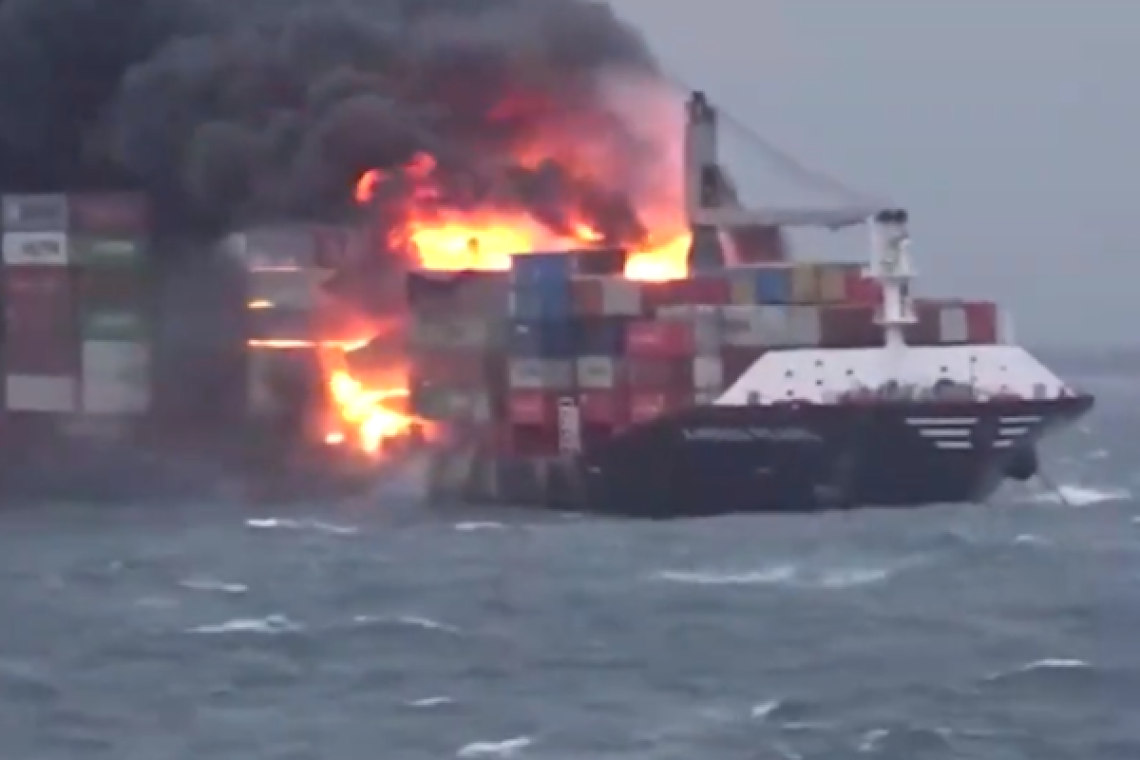1. The Growing Menace: Fires on the Horizon
The spectre of electric vehicle (EV) fires and the potential hazards posed by lithium-ion batteries have emerged as a pressing concern in the maritime landscape. As the shipping industry charts its course into a future dominated by larger container vessels, the shadow of this relatively new threat looms ominously, adding a layer of complexity to the already intricate tapestry of maritime safety.
2. Navigating the EV Era: Challenges in Maritime Safety
The rise of electric vehicles, propelled by the global push towards sustainability, brings with it a new set of challenges for the shipping industry. While the data on the frequency of EV fires compared to traditional internal combustion engine vehicles is inconclusive, the inherent characteristics of lithium-ion batteries intensify the stakes when incidents do occur.
3. The Power and Peril of Lithium-Ion Batteries
Lithium-ion batteries, which power a significant portion of modern EVs, are known for their high energy density. While this characteristic enables longer ranges and more efficient energy storage, it also presents a unique set of challenges when it comes to firefighting. Unlike conventional fires, extinguishing a lithium-ion battery fire requires specialized techniques and equipment.
4. Battling the Inferno: Limitations of Standard Firefighting Methods
Standard firefighting methods, such as water-based systems like sprinklers or carbon dioxide (CO2) dispensers, are not always effective in tackling lithium-ion battery fires. Unlike traditional fires that rely on oxygen, lithium-ion battery fires can occur without them, making them notoriously difficult to control using conventional means. This unconventional behaviour poses a significant hurdle for maritime safety protocols, which often rely on established firefighting practices designed for conventional shipboard fires.
5. Toxic Tempest: The Unseen Dangers of EV Fires
Moreover, the combustion of lithium-ion batteries releases a toxic cocktail of gases, further complicating the response to such incidents. The potential harm from inhaling these toxic fumes adds another layer of risk for first responders and complicates evacuation procedures.
6. Cargo Conundrum: Challenges with Increasing EV Transport
The sheer volume of electric vehicles being transported on modern cargo ships exacerbates the concern. As these vessels increase in size and capacity, so does the potential for a catastrophic incident involving EVs. The Allianz Global Shipping and Safety Review highlights a substantial uptick in incidents related to fires and explosions, indicating that the industry is grappling with the challenges posed by the evolving nature of cargo, including the proliferation of electric vehicles.
7. Debating the Risks: Myths vs. Realities
Despite some assertions that concerns about EV fires and lithium-ion batteries may be exaggerated, dissenting voices within the maritime community emphasize the need for a cautious approach. The incident involving the Freemantle Highway, where the heat from burning EVs melted aluminium and caused an explosive force that physically altered the vessel, serves as a stark reminder of the unpredictable nature of these incidents.
8. Charting the Course: Safeguarding the Future of Shipping
As the shipping industry sails into uncharted waters with the increasing prevalence of electric vehicles, addressing the unique challenges posed by lithium-ion battery fires becomes imperative. This includes reevaluating safety protocols, investing in specialized training for crews, and exploring advanced firefighting technologies capable of dealing with the intricacies of these evolving threats. The integration of comprehensive risk assessment strategies will be crucial to ensuring the safety of both maritime assets and the individuals tasked with navigating this new era of shipping.



